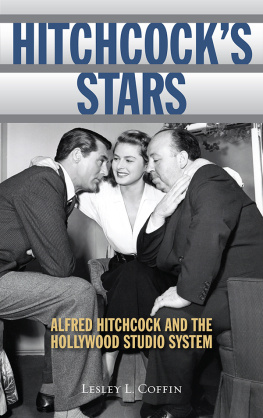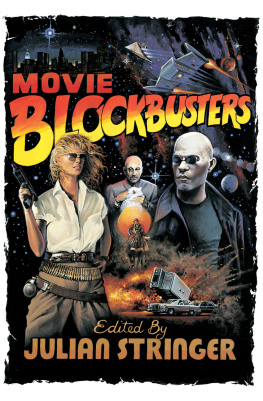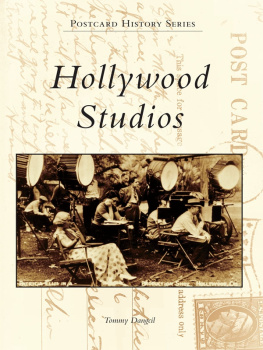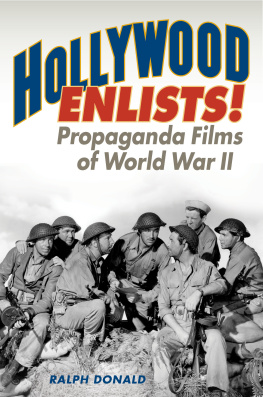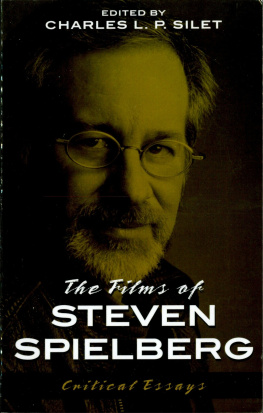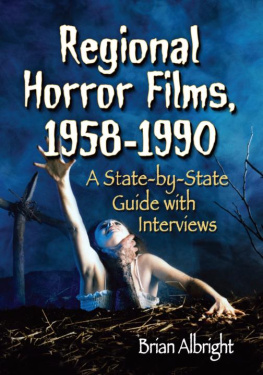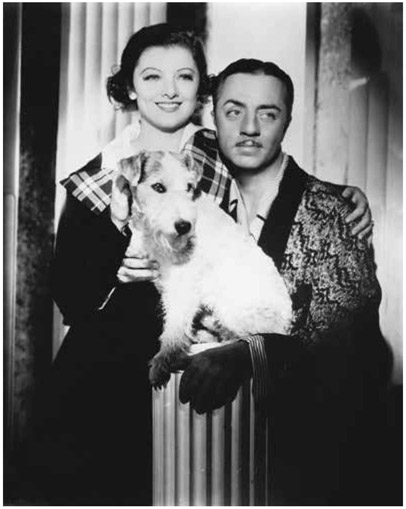This book grew out of my earlier The MGM Effect (2022), so it shares many of the same collaborators and contains wisdom culled from many of the same interviews. Likewise, some of the opinions that I have here affected as my own probably were actually requisitioned, inadvertently or not, from the names listed below, and from others I have since forgotten that I also stole from. So, if your name is listed here, or if it should be listed here and isnt, I owe you both my thanks and my gratitude, and in some cases an apology too.
Id particularly like to share my appreciation to Stephen X. Sylvester, who contributed the Man from U.N.C.L.E. essay, and who did a better job with it than I ever could have.
Hollywoods ace historian Marc Wanamaker also added immeasurably to both the look and the content of what is printed here. Marc, of course, is well-known and much appreciated by myself and by every Hollywood historian for his many services to our little community.
Id also like to single out for praise Greg Gormick and Donnie Norden, both of whom were on the backlot during its last days, and both of whom have made valuable contributions to MGM itself and to this volume in particular. Donnies book Phantom of the Backlot Presents... Hole in the Fence has recently been published, and Gregs, The Lions Serenade, is on the way. Look for them both. Likewise, at the Academy of Motion Picture Arts and Sciences Margaret Herrick Library, librarian Kristine Krueger, who, in spite of a worldwide COVID-19inflicted shutdown, managed to sleuth out valuable information about these last contentious days on the lot. She has my gratitude for her good work regarding, and during, two very differentand very difficulttimes.
Additional, and no less valuable contributions to this volume were contributed by the following MGM-related experts, enthusiasts, ex-employees, historians, supporters, and fans. So, thank you Richard Adkins, Marilyn Allen, Ron Barbagallo, John Bengston, Michael Benson, John Bertram, Danny Biederman, Michael F. Blake, David Bowen, Scott Brogan, Krista Christofferson, Ned Comstock, David English, Mike Escarzaga, John Escobar, Christian Esquevin, Rob Feeney, Robert Florczak, Rob Gold, Darryl M. Haase, Danny Hancock, Jon Heitland, David Heilman, Carl Hymans, Rob Klein, Robert Lane, Steve Martin, Alicia Mayer, John Mcelwee, Naomi Minkoff, Scott Moore, Larry McQueen, Jan Murree, Les Perkins, Ana Maria Quintana, Sharon Rich, Rick Rinehart, Robert Short, Richard W. Smith, Steven C. Smith, Mike Stein, John Stephen, E. J. Stephens, William Stillman, Stan Taffel, Karl Thiede, Frank Thompson, Nicholas Toth, Michael Troyan, Martin Turnbull, Gary Wayne, Werner Weiss, Robert Welch, Mike Wetherell, Josh Young, Charles Ziarko, and Deana Zvara.
Lastly, this book is dedicated to Zoe and Beth; like Leo the Lion, long may they roar.
The problem with making a list of anything isnt those items that make that list, its those that for one reason or another fail to do so. Therefore, in order to make up for any inadvertent omissions, slights, or sacrileges, what follows is a second fifty notable, for one reason or another, MGM films, each with a brief description/explanation justifying its inclusion here.
For this particular half hundred, however, we have loosened the requirements for making the cut just a bit. Once again, a films ripple effect through studio and popular culture is a major consideration for inclusion, but an attempt has also been made to make up for past wrongs by including films that highlight a particular series, trend, or star that may have inadvertently been short-shrifted before. Included as well are a few one-off pictures that should have done more for their creators, their studio, or posterity than they did; that time has rather unfairly forgotten; or that were unfairly remembered only after the fact and only after it was too late to make a difference.
Most of the films below, even aside from their historic significance, are well worth watching, by the way. A few are masterpieces, and even the ones that fail for one reason or another are well worth a look as examples of a larger trend or, yes, even on their own merits. Although they dont all, I should hasten to add, contribute equally to the concept of art for the sake of art, a few certainly do. You can decide for yourself which ones they are.
The Crowd (1927). King Vidors silent masterpiece, like his The Big Parade, deals with an individuals sometimes reluctant assimilation into a larger collective, here represented by James Murrays little-guy battles against corporate New York rather than the earlier films depiction of integration through military might. This Vidor film also anticipates later corporate America takedowns like The Man in the Gray Flannel Suit, The Apartment, and TVs Mad Men, although the irony of corporate Hollywood condemning corporate America is just as ridiculous today as it was in 1927. Incidentally, Murray himself was an early victim of that big brother omnipotence. He became a homeless alcoholic and died in 1936, an apparent suicide.
Show People (1928). Marion Davies was an important star on early MGM rosters. Most of her films, however, were period pieces, which failed to show the very contemporary (in the 1920s) Davies at her best but which her mentor-boyfriend, millionaire William Randolph Hearst, seemed to prefer. Fortunately, King Vidors (yes, him again) Show People bucked this trend and gave the ever-game star one of her better roles, as well as the opportunity to send up Hollywood without all the usual angst studios, then as well as now, seem to think is necessary when dealing with themselves as subject. MGM was not then much into angst, however, and would buck the trend and return to this formula later in Bombshell (1933) and Going Hollywood (again in 1933 and again with Davies). They were still milking the happy Hollywood trope in Singin in the Rain (1951) and beyond. Bonus: Marion contributes amusing impressions of several Hollywood stars, and several Hollywood stars contribute amusing impressions of themselves.

Show People (1928) is one of the best movies built around making movies, and one of the best movies built around Marion Davies. Photofest
Anna Christie (1930). Garbo Talks! Which alone is perhaps enough to get this one a slot on the list. The film itself is a bit of a slog, although when the Divine One enters and tells a bartender to Gimme a whisky, ginger ale on the side, and dont be stingy, baby! a viewer, now or in 1930, can hardly help but be aware that cinema history is occurring before ones eyes, and ears.
Manhattan Melodrama (1934). A good enough gangster film, and the castClark Gable, Myrna Loy, and William Powellkeep things lively enough. But its place in history comes courtesy of real-life gangster John Dillinger, who crept out of hiding to see this film, partially based on his life, and was gunned down in Chicago by FBI agents as he left the theater.
Myrna Loy and William Powell as Nick and Nora Charles, seen with their dog, Asta, in The Thin Man (1934). Doubtlessly, one of them has just said something clever and sophisticated. Photofest
The Thin Man (1934) MGMs most prestigious film series rather ironically began with this low-budget, twelve-day programmer courtesy of the ever-game Woody Van Dyke and went on to become an audience favorite and led to numerous sequels and William PowellMyrna Loy team-upsand has influenced smart romantic banter between men and women, on-screen and off, ever since. The plot here, as in its five sequels, involves solving a mystery, although the sleuthing is really just something to do while this most glamorous of couples trade innuendos and consume copious amounts of alcohol, Prohibition having been repealed only six months before the first films release.


